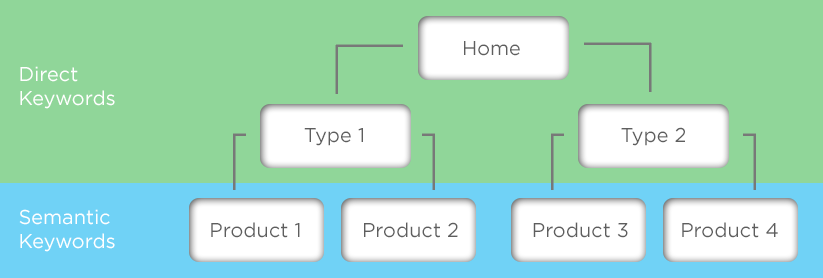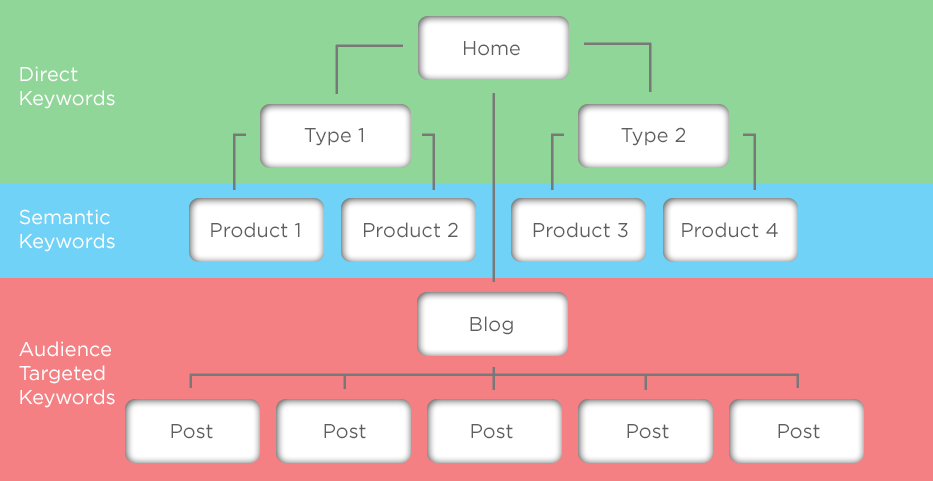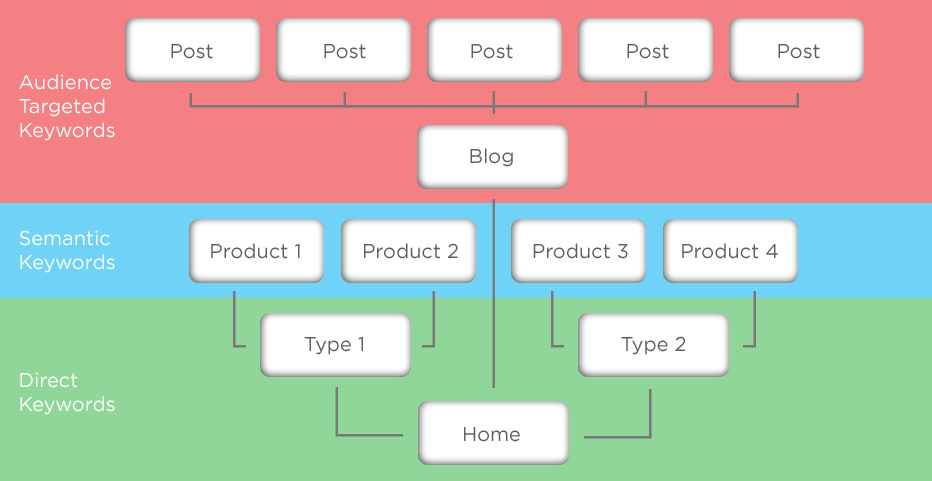“A company does not create a brand. The brand is created by the audience.”
When a brand is created, the design of a new website is one of the first steps that follows. Once a company or product decides how it wants to be branded, the Web designer goes through the material and creates a home page. After that design is approved, the designer begins to create the other pages on the website until it is completed. When looking at keywords, SEO specialists work in very much the same way.
The main keywords are chosen based on the brand and are implemented on the home page of the website. This focuses traffic to the website through the home page. However, with all of Google’s latest algorithm updates, this is not the best way to use keywords to target an audience.
Recently, Google’s use of semantic keywords in search engine rankings has drastically changed the process of identifying keywords. Semantic SEO encourages the use of keywords that are similar to the topic of the website. Google examines terms that are near other terms on the page to determine relationships between certain keywords, which means that including these types of keywords is crucial to organic rankings.
Semantic SEO, however, does not only apply to keywords. It applies to pages as well. Since Google ranks pages and not websites, it is important to create a hierarchical structure of each page based on its chosen keywords in order to support the home page.

Using Keywords in Website Structure
Let me give an example: Suppose a bicycle shop in Austin has just created its new website and is looking to optimize it. The keyword phrase that most identifies with the company’s brand is “awesome bikes in austin texas.” Through market research this phrase has been identified as generating the highest search volume, the most website sessions, and the most conversions. So, the bike shop optimizes its home page for this phrase.
Now let’s say that the shop sells two specific kinds of bikes: mountain bikes and racing bikes. Each has its own page describing the benefits of that style. These pages will be optimized for similar primary keywords to support the home page. However, underneath these pages the website includes pages for all of the individual bikes. These pages won’t relate as much to the home page because their content is about a particular bike and not about the bike shop. For this reason, they hold semantic value for the keywords. Since these pages will include terms that relate to bikes such as “weatherproof tires” or “gear shifter,” the home page will gain semantic value based on that relationship.
 Now let’s say that this bike shop wants to create a blog for its website, which it will update weekly. For the first blog post the shop writes about bike trails in Austin. It decides on this topic due to its target audience of mountain bike enthusiasts. Because of the semantic relationship between this topic and the bike shop’s keywords, Google knows that the shop is creating relevant content for its audience that is related to its brand. This is the mutual benefit of SEO: The brand creates content for the audience, the audience searches for the content on Google, and Google displays the content and supports sharing of the brand.
Now let’s say that this bike shop wants to create a blog for its website, which it will update weekly. For the first blog post the shop writes about bike trails in Austin. It decides on this topic due to its target audience of mountain bike enthusiasts. Because of the semantic relationship between this topic and the bike shop’s keywords, Google knows that the shop is creating relevant content for its audience that is related to its brand. This is the mutual benefit of SEO: The brand creates content for the audience, the audience searches for the content on Google, and Google displays the content and supports sharing of the brand.

Implementing Keywords in Content Strategy
This type of situation creates a hierarchal structure of branding and keywords with the home page at the top. However, what if the structure was turned upside down? This is where content marketing comes into play.
 Content marketing focuses on appealing to target audiences and implementing semantic keywords at the same time. This structure essentially works the same way as the sales funnel. A target audience of prospects engages with the content at the top level and becomes a lead. That lead goes from cold to hot as it engages more with content. This eventually develops into a conversion when the lead becomes a customer.
Content marketing focuses on appealing to target audiences and implementing semantic keywords at the same time. This structure essentially works the same way as the sales funnel. A target audience of prospects engages with the content at the top level and becomes a lead. That lead goes from cold to hot as it engages more with content. This eventually develops into a conversion when the lead becomes a customer.
The key to this strategy is that content marketing as well as keyword research must start with the audience. The individual will then trickle through the process until he or she converts. This system creates companies like Moz or Hubspot that are better known for their blogs than for their products — these companies show success through exceptional content marketing.
So what does all of this mean for your brand? This means that a brand is created through the audience, not the other way around. It is important to remember that a brand is not just a logo, rather it is an expression of the company and its values. The content is in place to demonstrate these values. If branding starts in content marketing, it becomes defined by what the audience is looking for, since audience targeting is where content creation begins, and is therefore more relevant. A company does not create a brand. The brand is created by the audience.
When it comes to content marketing and SEO, here are the points to remember:
1. Semantic SEO applies to pages as well as keywords.
Pages must be assigned topics and keywords based on their content. This will encourage user engagement and Google rankings.
2. Mutual benefit is inherent in good SEO practices.
Websites must be optimized for the user in such a way that the content matches the topic for the page and is relevant to the overall topic of the website, which is also good for Google.
3. Audience targeting should be the first step.
The brand must be built around the audience. Since the content (blog) is the first thing that a user engages with, it must be the face of the brand.
4. Content marketing starts at the top.
When deciding on content, it should be as relevant to the audience as it is to the brand. Creating quality content will help users understand the value of the brand.

